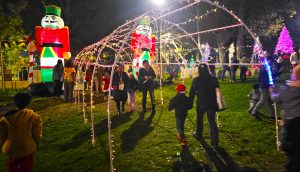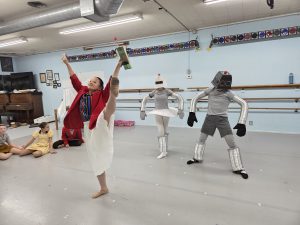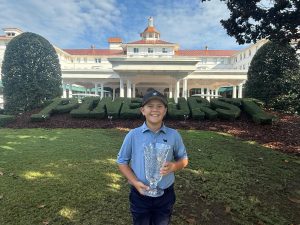The web site for Santa Clara University’s de Saisset Museum defines “coriolis” as the “effects of the earth’s rotation on the movement of the air in the atmosphere and water in the oceans” whereas “torqueri” alludes to the movement of “twisting, bending, or distorting.” The sculptures in Bruce Beasley’s Coriolis and Torqueri series offer visual depictions of these terms with their whimsical shapes, unpredictable swerves and rollercoaster-like designs. The exhibit, which opened at the museum on Sept. 29, will be on display through Dec. 4.
“The sculptures are about visual communication,” Beasley says. “I’m not going to try to say in words what they are about. Just as geometry is the logical language of shape, sculpture is the emotional language of shape.”
Beasley uses a custom-built 3D printer to create his sculptures. He feels that that 3D printing allows him to produce shapes that probably couldn’t be made in any other way. Being a sculptor who’s passionate about the freedom of shape, he credits 3D printing for increasing the possibilities of what he refers to as his “sculptural vocabulary.”
“All the sculptures in the Coriolis series are produced by 3D printing and a material called ABS (acrylonitrile butadiene styrene), which is a cream color polymer,” Beasley says. “The Torqueri series have the same sculptural vocabulary as the Coriolis series but the pieces are bigger and made in cast bronze. Here, I used a different aspect of 3D printing but it’s equally revolutionary because I’ve found a way to make shapes cast in bronze that wouldn’t be possible otherwise.”
According to Beasley, it took about four months to create the shapes to having a finished piece in bronze for the Torqueri series. A finished piece in the Coriolis series took about one month.
Beasley attended Dartmouth College from 1957 to 1959 but didn’t graduate from there.
“I found my calling to be a sculptor at Dartmouth but Dartmouth didn’t have a Sculpture program and Berkeley did. That’s why I transferred to Berkeley,” says Beasley, who graduated from U.C. Berkeley in 1962 as a Sculpture major. “Berkeley during the 1960s was a vibrant time musically, politically, socially and artistically. I have been making sculptures since 1960.”
The de Saisset Museum is on the Santa Clara University campus, adjacent to the Mission Church. Visit scu.edu/desaisset for details about museum hours and directions.











0 comments